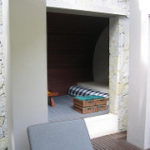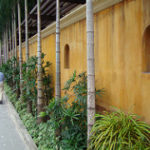Hoi An, one of Top 10 Asian tourist destinations
Hoi An, 1 of Top ten Asian tourist locations
This is part of the Condé Nast Traveler 25th Yearly Readers’ Decision Award which was published recently in New York.
The 111-yr-previous Sofitel Legend Metropole, found in capital Ha Noi, ranked third amongst twenty ideal hotels in the area, according to the magazine.
Two other Vietnamese candidates Park Hyatt Saigon and Sheraton Saigon were also on the checklist.
Existence Heritage Resort Hoi An and Nam Hai had been positioned the 10th and 14th positions between 15 major resorts in Asia.
This yr, the award drew the participation of 46,476 voters.
Hoi An, an exceptionally effectively-preserved instance of a classic Asian trading port, is an outstanding material manifestation of the fusion of cultures above time. It was acknowledged as a World Heritage Web site by UNESCO.
The town has been totally and assiduously preserved: it is the only town in Viet Nam that has survived intact in this way.
Most of the buildings are in the traditional architectural style of the 19th and 20th centuries. They are aligned along narrow lanes of classic type. They incorporate several religious buildings, this kind of as pagodas, temples, meeting homes, etc., which relate to the development of a port neighborhood. The classic lifestyle, religion, customs and cooking has been preserved and a lot of festivals nevertheless take area yearly.
By the end of the century, the rise of other ports on the coast of Viet Nam, in certain Da Nang, and silting of its harbor, led to the ultimate eclipse of Hoi An. As a outcome of this economic stagnation, it has preserved its early visual appeal in a remarkably intact state, the only town in the nation to have completed so. The ancient town is situated on the north bank of Thu Bon River. There is a street running east-west along the river’s edge and three additional streets parallel to the river. They are intersected at correct angles by streets and alleys. Within this region there are homes (often combined with shops), religious monuments such as pagodas, temples, communal homes and household cult houses, a ferry quay and an open market.
The architecture of Hoi An, which is nearly totally of wood, is of considerable curiosity. It combines classic Vietnamese patterns and strategies with these from other countries.
The typical property conforms to a corridor plan, the following elements happening in sequence: home, yard and house. The buildings are: family members cult homes, committed to the worship of ancestors the community homes, utilised for worship of ancient sages, founders of settlements, or the legendary founders of crafts the pagodas are virtually all from the 19th century, even though inscriptions present them to have been founded in the 17th and 18th centuries.
They conform to a square layout and decoration is largely confined to the elaborate roofs. In the case of the greater examples, they constituted nuclei of linked buildings with religious and secular functions. Some of the bigger pagodas also served as meeting halls. These are situated along the major street.
There is a fine wooden bridge, reminiscent of Japanese examples, with a pagoda on it. It has existed from at least the early 18th century, as an inscription indicates, but it has been reconstructed several times. There is also a number of ancient tombs in Vietnamese, Japanese and Chinese fashion inside the buffer zone./.





















Leave a Reply